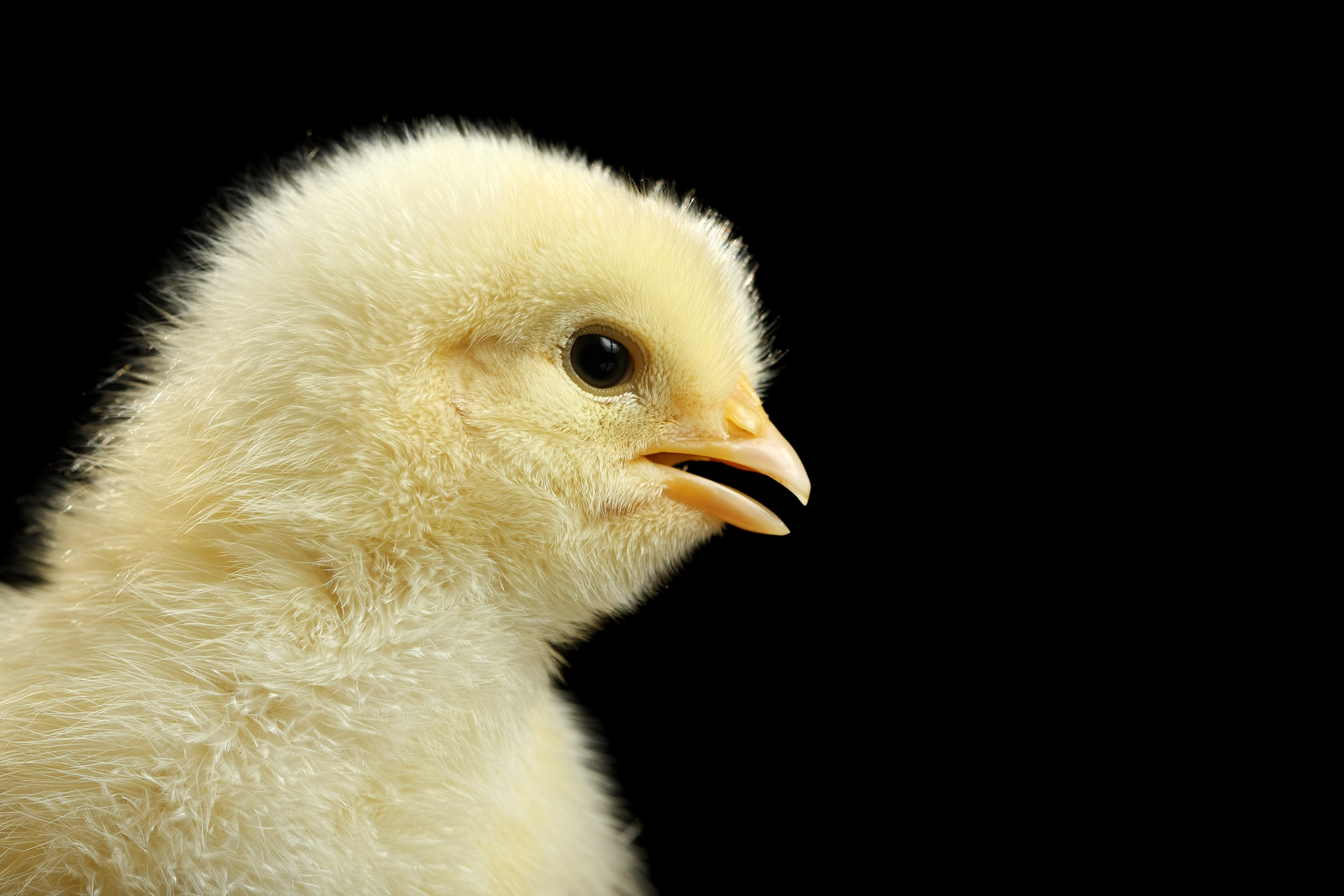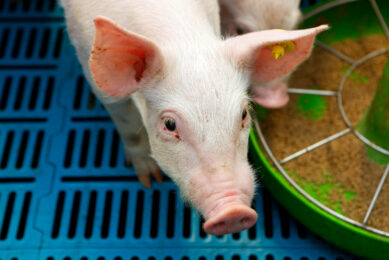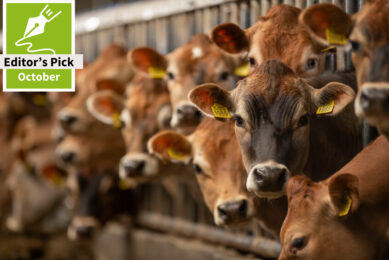A new probiotic strain for a post-antibiotic world

Bacillus subtilis based probiotics appear to be an efficient alternative to in-feed antibiotics in poultry production. However, choosing a consistently performing strain is often a challenge. A new Bacillus subtilis strain has been developed with a dual action: stimulating growing performance under normal and challenged conditions.
Stepping away from antibiotic growth promotor usage in poultry feeds is a growing challenge in lots of countries around the world. The extensive use of antibiotics, and the fact that some bacteria also pathogenic for humans have developed antibiotic resistance, has forced animal producers to find alternatives to the antibiotics currently used in animal feeding to guarantee production efficiency and safe foods for consumers. A large range of products have shown some potential to help poultry growers to replace antibiotics in their productions.
Among the wide variety of solutions including probiotics, prebiotics, essential oils, organic acids, plant extracts or their combinations; probiotics have shown a lot of promise. Probiotics are live microorganisms which, when administered in the right amount, confer a health benefit on the host (FAO, WHO 2001). Among the wide variety of probiotics are strains belonging to Lactobacillus, Enterococcus, Bifidobacterium, Lactococcus, Streptococcus, Pediococcus, Bacillus genera as well as yeast species. Finding the right solution amongst this large spectrum of microorganisms used in poultry production appears difficult. The ability of Bacillus species to form endospores, which are stable to passage of the stomach, bile salts, chemical and physical stresses such as strong pelleting conditions or long-term storage under hot conditions makes them very attractive for animal feeding. In poultry production, different strains of Bacillus subtilis, Bacillus amyloliquefaciens and Bacillus licheniformis have been used for several years. But, how to choose a product when such a large range exists?
How to compare Bacillus probiotics
Even within Bacillus subtilis strains, the large variability of the efficacy obtained underlines the importance of a methodology to differentiate the various products as well as to develop a new effective probiotic strain. To evaluate the potential efficacy of the different strains of Bacillus, an extensive in vitro screening process as well as a complete phylogenetic characterisation have thus been developed.
A series of measurements were performed on various Bacillus strains stored at the DSMZ (Deutsche Sammlung von Mikroorganismen und Zellkulturen- German Collection of Microorganisms and Cell Cultures), Braunschweig, Germany. Hemolytic activity of the strains was tested as described by the European Food Safety Authority using Tryptic Soy Agar containing 5% defibrinated sheep blood (Statens Serum Institute, Denmark). The incubation was done at 30˚C for 48 hours, and when there was a hemolytic activity, it was observed by the formation of a lysis halo in the plates. This halo was not present when the B.subtilis DSM29784 strain was tested. In order to evaluate the potential activity of the different Bacillus subtilis strains against some pathogenic microorganisms, in vitro radial diffusion assays were performed. A suspension containing 105 spores of Clostridium perfringens ATTC13124 was added to the medium and 10 µl of culture fluid of the Bacillus strains were added to the test plate. The plates were incubated under anaerobic conditions at 37°C overnight. Some lysis were visible around some of the wells: as was the case for Bacillus subtilis strain DSM29784.
Antimicrobial susceptibility was analysed by determination of the Minimal Inhibitory Concentration of eight clinical relevant antibiotics representing the most abundant and critical antibiotics used for humans. The analyses were made by following the standard procedure recommended by CLSI 2012. Lastly, the effect on gut barrier was also evaluated using Caco2 cell transwell cultures with measurement of trans-epithelial electrical resistance under standard or IL-1 stimulation conditions. Gastric stability (under pH2 and pepsin supplementation) and germination time in intestinal conditions were also determined. Within all these criteria, B. subtilis DSM29784 showed good results.
To complete the characterisation of the various Bacillus strains, a sequencing and phylogenetic analysis based on the gyrB gene was done. The sequences were aligned using the ClustalW and a phylogenetic tree was made based on distance matrix calculated with the Kimura distance formula using MegAlign. Figure 1 shows the homology between the different strains. To allow comparison, humans and mice share 92% of their genes. Thus, comparing different Bacillus subtilis strains may show from 79% to 97% homology precluding their individual efficacy.
Figure 1 – Phylogenetic tree based on gyrB gene sequences of selected Bacillus reference strains (including DSM29784 strain).

Consistency under standard or challenged conditions
Developing a consistent probiotic solution with actions on both performance and gut health is not so easy. Indeed, the final in vivo evaluation is necessary for full characterisation, and it is important to determine the potential of a probiotic according to the environmental conditions. Indeed, it is often clearly admitted that challenging the animals, through built-up litter, enhancing densities, imbalanced protein diets might exacerbate the potential of probiotics. However, it should be kept in mind that challenges through very high feed intake, genetically inherent in currently used poultry strains, could induce more intestinal pressure on birds than health challenges. Indeed, recent trials performed with a new B. subtilis strain showed that the improvement of growth in low performing birds (1.6 kg BW at 35 days) was not better than the improvement measured in the highly performing ones (2.2 kg BW at 35 days). Table 1 shows the consistency of performance obtained with the new B. subtilis strain, over a range of dietary conditions and performance levels.
Necrotic enteritis, caused by Clostridium perfringens, is a critical intestinal disorder causing a lot of economic losses, estimated to reach up to $ 6 billion per year worldwide. Together with dysbacteriosis or dysbiosis causing disbalance of the intestinal microbiota, it has been shown to be the first health issue faced by poultry producers when removing antibiotic growth promoters. Thus, developing solutions to help counteract the effects of such pathologies and syndromes has been intensively looked at. The new B. subtilis strain has been tested for its effect under those highly challenging conditions. Using a experimental model developed at Southern Poultry Research (Athens, GA), various B. subtilis have been tested and the new strain has shown its unique efficiency (Figure 2) on growth performance of animals challenged with Clostridium perfringens and developing necrotic enteritis.
Figure 2 – Effect of DSM29784 strain on broiler performance under challenged conditions.

Within the current large range of solutions, probiotics appear to be one of the most promising and have already shown substantive effects on human beings. In order to choose and develop a relevant probiotic solution, an extensive screening process has to be in place. Indeed, even within Bacillus subtilis strains, large differences exist and a new strain of B. subtilis (DSM29784) has been developed using such a process showing a consistent effect on growth performance under normal and challenged conditions. Indeed, it has exhibited a direct effect on the microbiota, stimulating the beneficial bacteria and mitigating the development of some pathogenic ones. Bacillus subtilis strain DSM29784 also has indirect effects on the overall gut health, from intestinal barrier integrity to stimulation of immune function of the intestine and reduction of the inflammation.











